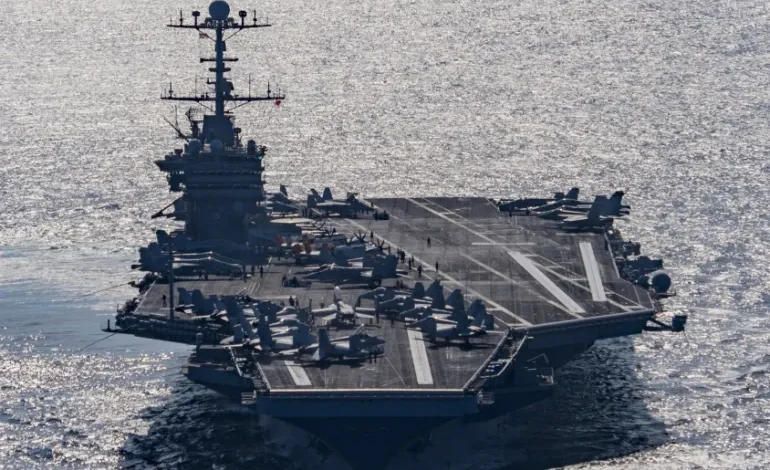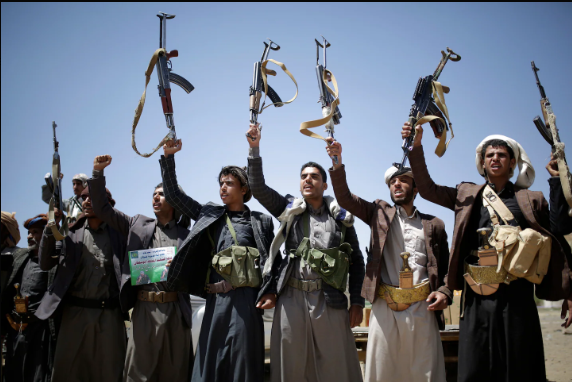US-Yemen Relations: Navigating a Complex Geopolitical Crisis

Tensions Between the United States and Yemen: A Complex Geopolitical Crisis
The geopolitical landscape in the Middle East has long been marked by instability, with various nations and groups vying for influence and power. One of the most pressing and complex conflicts today involves Yemen, a country caught in a devastating civil war, and the United States, which has been deeply involved in the region’s security dynamics. The relationship between the two has become increasingly strained, particularly due to the rise of the Houthi rebels and their growing threat to international security.
Yemen’s Civil War and the Houthi Uprising
Yemen’s civil war, which began in 2014, is rooted in a struggle for control between the Houthi rebels, a group predominantly from the Shiite Zaidi sect, and the internationally recognized government of President Abdrabbuh Mansur Hadi. The Houthis, backed by Iran, have seized control of large parts of northern Yemen, including the capital, Sana’a. The conflict has drawn in a Saudi-led coalition, which has received support from the United States, making Yemen a battleground for regional power struggles, particularly between Saudi Arabia and Iran.
The war has resulted in one of the world’s worst humanitarian crises, with tens of thousands of lives lost, millions displaced, and widespread destruction of infrastructure. As of 2025, there seems to be no end in sight, and the war continues to fuel both local and international tensions.
The United States’ Role
The United States has been an important actor in Yemen’s conflict, primarily through its support for Saudi Arabia and the coalition forces. U.S. involvement has been multifaceted, including the provision of intelligence, air support, and logistical aid to the Saudi-led coalition. Washington’s interest in Yemen is largely driven by its broader Middle East strategy, which includes countering Iranian influence, securing key shipping routes in the Red Sea, and combating terrorism.
One of the most critical aspects of U.S. involvement is the presence of al-Qaeda in the Arabian Peninsula (AQAP) and the Islamic State’s (ISIS) operations in Yemen. Both groups have exploited the chaos of the civil war to strengthen their positions, leading the U.S. to conduct counterterrorism operations, including drone strikes, to dismantle these extremist factions.
However, U.S. support for the Saudi-led coalition has drawn significant criticism. Human rights organizations have pointed to the extensive civilian casualties caused by airstrikes, many of which have been conducted using U.S. weapons. This has led to mounting pressure on the U.S. government to reconsider its role in the conflict, especially as the war drags on without a clear resolution.

The Houthi Threat to U.S. Interests
In recent years, the Houthi rebels have become a significant concern for the United States, especially in the context of their growing ties with Iran. The Houthis have launched a series of attacks on shipping lanes in the Red Sea, a vital waterway for global trade. These attacks, often involving drones and missiles, have targeted both commercial vessels and military assets, including U.S. Navy ships. The U.S. sees these actions as a direct challenge to international law and maritime security.
In addition to their military actions, the Houthis have also developed sophisticated missile technology, capable of reaching further distances and threatening the security of neighboring countries, including Saudi Arabia and the UAE. For the U.S., this development is concerning, as it challenges the stability of the region and the free flow of commerce.
The Diplomatic Deadlock
Despite the escalation in hostilities, diplomatic efforts to resolve the conflict in Yemen have largely been unsuccessful. The United Nations has led numerous peace initiatives, but with little progress. The Houthis’ refusal to negotiate with the Hadi government, which they view as illegitimate, and the Saudi-led coalition’s hardline stance against their advances have left the door for peace negotiations largely closed.
Moreover, the U.S. has faced criticism for its lack of consistent engagement in the peace process. While Washington has occasionally called for a ceasefire and a political solution, its broader strategy seems to focus on countering Iran’s influence rather than fostering a comprehensive peace agreement. The result is a continued military stalemate and a humanitarian disaster that shows no sign of abating.
The Path Forward
As the situation in Yemen remains fluid, the United States faces several challenges. The continued rise of the Houthis and their attacks on international shipping routes make it clear that the conflict has far-reaching implications beyond Yemen’s borders. At the same time, the U.S. is under increasing pressure to reconsider its involvement in a war that has caused untold suffering for civilians and damaged its global reputation.
The future of U.S.-Yemen relations will likely depend on several factors, including the outcome of the civil war, the role of Iran, and the actions of international actors like the United Nations. However, one thing is clear: Yemen’s crisis is far from over, and the United States will continue to play a pivotal role in shaping the region’s future.
In the coming months, Washington may need to reassess its strategy, balancing the need for security in the Middle East with a desire to reduce its military footprint and support a political solution that addresses the root causes of the conflict. How the U.S. engages with Yemen and the broader regional dynamics will significantly influence not only the outcome of the war but also its broader foreign policy goals in the Middle East.











